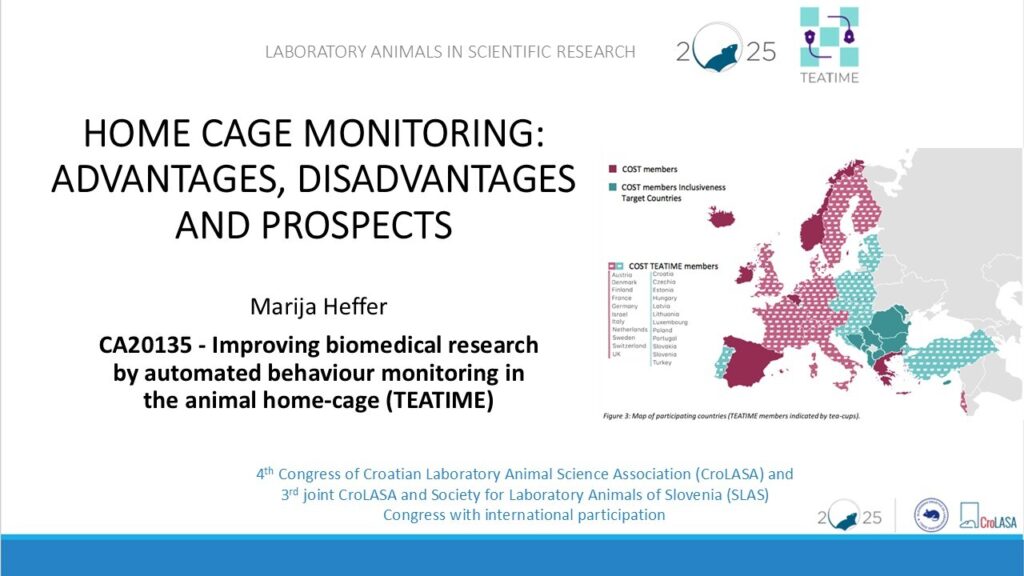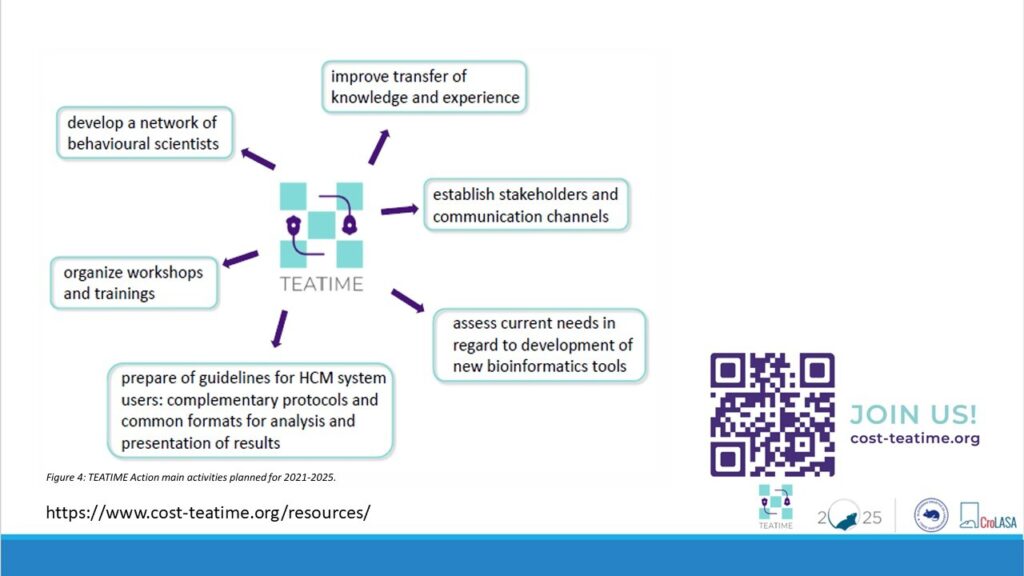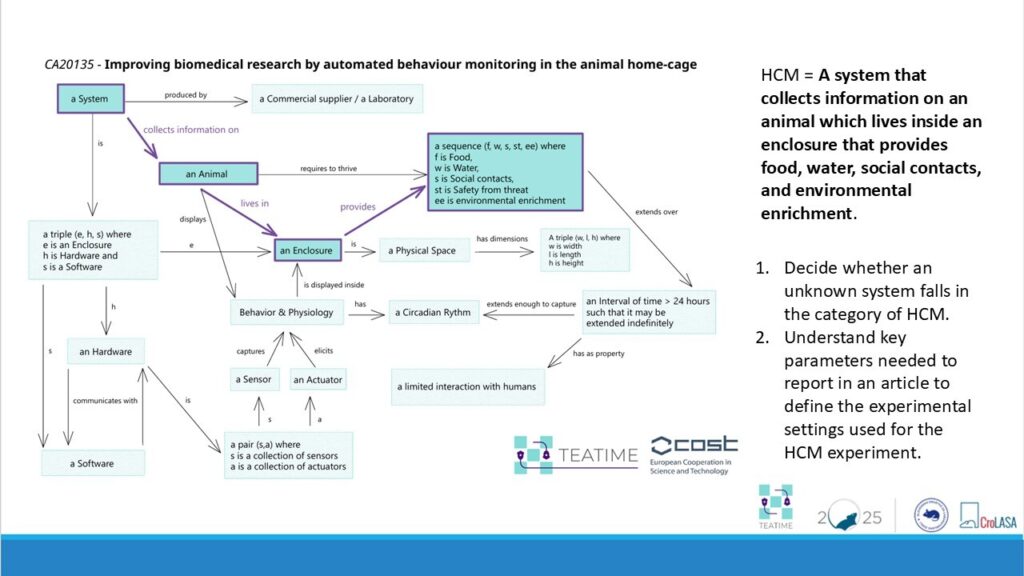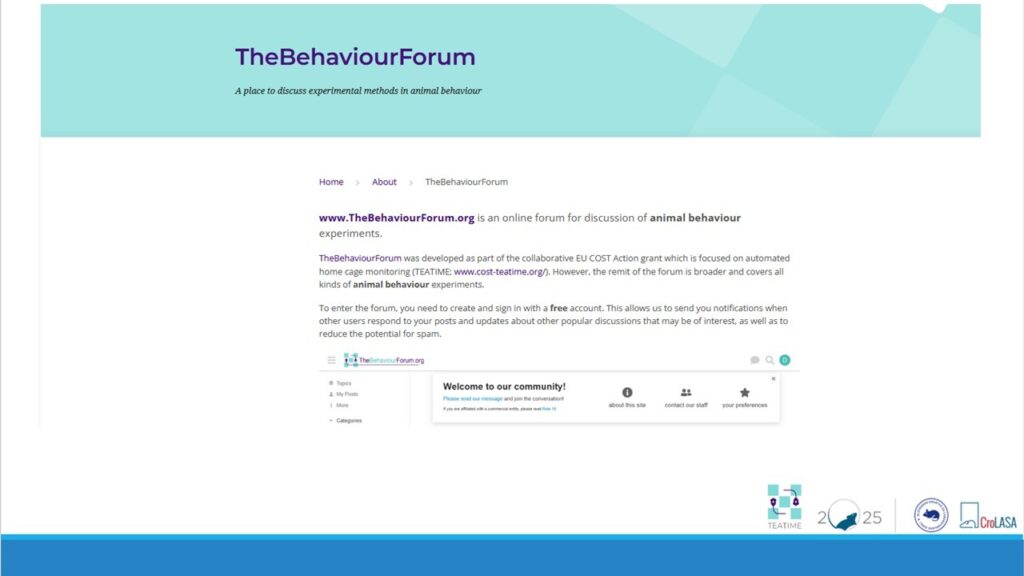Panelists on the first day included Bojan Polić and Diana Cash, who presented the results of their immuno-metabolic studies and brain imaging in translational drug discovery studies, respectively. The afternoon keynote lecture was given by Kirk Leech, focusing on the need for open and clear communication with the public regarding animal research. A mini-symposium on laboratory animal welfare was held in the afternoon, featuring the presentation of COST Action CA20135 – Improving Biomedical Research by Automated Behavior Monitoring in the Animal Home Cage (TEATIME; see the slides below). Marija Heffer and Davor Virag discussed the advantages, limitations, and possibilities of HOME Cage monitoring, highlighting a new mode of communication among laboratory animal scientists through the action group TheBehaviourForum.org, an outcome of CA20135. Srećko Gajović presented the design of the BIMIS research center, which includes state-of-the-art housing and modalities for animal research, featuring 24/7 Home cage monitoring.
The second day of the congress featured a mini-symposium on in vitro models as alternatives to animal testing. Noteworthy was Marko Pende’s presentation of a technique combining tissue clearing with VDR technology to create a powerful tool for 3D analysis of the brain and spinal cord. Additionally, Silvia Letasieva conducted an insightful workshop on the application of a 3D reconstructed tissue model of the epidermis for skin irritation tests.
The congress provided an excellent opportunity for communication among scientists involved in laboratory animal research within the region. It was rich with information on contemporary research directions, especially methods utilizing next-generation approaches, 3D principles, and an emphasis on animal welfare to enhance reproducibility and humanization in science.



